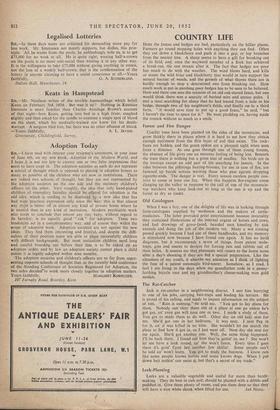Adoption Today
have read with interest your reviewer's comments, in your issue of June 6th, on my new nook, Adoption in the Modern World, and I hope it is not too late to correct one or two false impressions that seem to have crept in. The adoption societies as such do not represent a school of thought which is opposed to placing in adoptive homes as many as possible of the children who are now in institutions. There are indeed two schools of thought, but they are not represented by the adoption societies on the one side and the statutory children's officers on the other. Very roughly, the idea that only hand-picked children of exemplary heredity should be offered for adoption is the old idea, which is tending to be displaced by a new idea that has had wide practical expression only since the war; this is that almost any child is better off in almost any kind of private home where he is wanted than in any kind of institution. Modern psychiatric work also tends to conclude that almost any tiny baby, without regard to its heredity, is an equally good " risk " for adopters. These two tendencies act in a complementary way, and of course they widen the scope of adoption work. Adoption societies are not against the new ideas. They find them interesting and fruitful, and despite the diffi- culties of their position some are able to place successfully children with difficult backgrounds. Bin most institution children need long and careful boarding out before their fate is to be risked on an adoption order; and by law an adoption society cannot place a child unless it is legally .adopted within nine months.
The adoption societies and children's officers are so far from repre- senting opposite schools of thought that, at the recently held conference of the Standing Conference of Societies Registered for Adoption, the two sides decided–to work more closely together in adoption matters.
Yours faithfully, MARGARET KORNITZER. 107 Farnaby Road, Bromley, Kent. .


















































 Previous page
Previous page